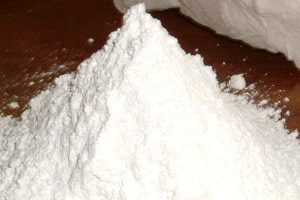
In a growing legal battle, hundreds of women have filed lawsuits against Johnson & Johnson, claiming the company’s talcum powder products led to their ovarian cancers. The suits claim Johnson & Johnson was negligent in not warning of the toxic substances in the powders and the possible cancer risk, the Inquisitr reports. FairWarning, a nonprofit […]

Lawsuits Mount Against Johnson & Johnson Talcum Powder
In a growing legal battle, hundreds of women have filed lawsuits against Johnson & Johnson, claiming the company’s talcum powder products led to their ovarian cancers.
The suits claim Johnson & Johnson was negligent in not warning of the toxic substances in the powders and the possible cancer risk, the Inquisitr reports.
FairWarning, a nonprofit investigative news organization that focuses on public health, safety and environmental issues, reports that a number of research studies claim regular use of talcum powder increases the risk of ovarian cancer. FairWarning editor Myron Levin said ovarian cancer is diagnosed in 20,000 women each year, with close to 14,000 dying annually from the disease. Researchers believe there is a “definite causal link” to talcum powder use in about 10 percent (approximately 2,000) of those cases. Levin told Public Radio International (PRI), “There are in the neighborhood of 700 .”
Johnson & Johnson’s baby powder has been sold to consumers for more than 100 years. Talcum powder is widely used to absorb moisture and reduce friction; it helps keep skin dry and prevents rashes. But the American Cancer Society said there is concern that women who regularly apply talcum powder in the genital area have an increased risk of ovarian cancer. Research has suggested that talc particles from powder applied to the genital area or used on sanitary napkins, diaphragms, or condoms can travel through the vagina, uterus, and fallopian tubes to the ovaries. The particles may cause an inflammatory response that helps create conditions conducive to cancer cell growth.
According to FairWarning, as far back as 1976 toxic chemicals were found in talcum powder. The website reports that in 1976 Mount Sinai Hospital researchers found two types of asbestos, tremolite, and anthophyllite, in 10 of the 20 consumer talcum products tested. Asbestos is a known health hazard. FairWarning reports, “Altogether, about 20 epidemiological studies have found increased rates of ovarian cancer risk for women using talc for hygiene purposes.”
Johnson & Johnson counters that numerous studies have found talcum powder to be safe, according to the Inquisitr. On its website, J & J says, “Few ingredients have demonstrated the same performance, mildness, and safety profile as cosmetic talc, which has been used for over 100 years by millions of people around the world. Talc is a common natural ingredient found in cosmetic products such as baby powder and adult body and facial powders, and in a range of other consumer products such as toothpaste, chewing gum, and aspirin.”
In 2005, the National Toxicology Program (of the federal Department of Health and Human Services) said that it did not have sufficient data to list talc as a cancer-causing agent, but in 2006 the International Agency for Research on Cancer, the cancer research arm of the World Health Organization, classified talc as possibly carcinogenic to human beings.
In 2013, in a trial in South Dakota involving a talcum powder/ovarian cancer claim, the jury found Johnson & Johnson Consumer Cos., Inc., guilty of negligence for failing to warn of the cancer risk. Analysis of the plaintiff’s ovarian tumor tissue revealed talc particles in the tissue. Despite the negligence finding, the jury did not award damages. The jury foreperson said they did not have sufficient “medical proof” that talcum powder caused the cancer.


